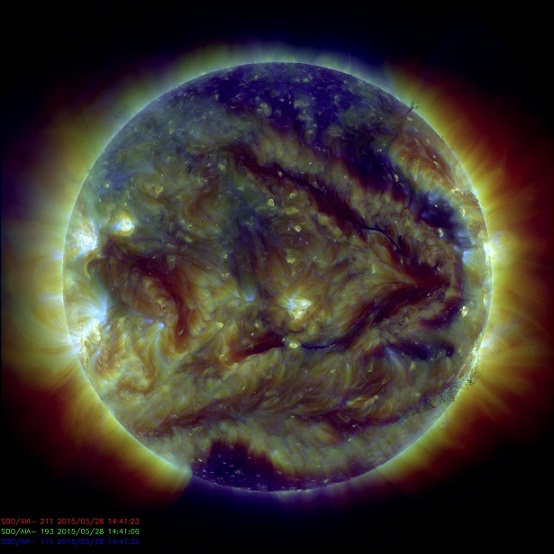| Online: | |
| Visits: | |
| Stories: |

| Story Views | |
| Now: | |
| Last Hour: | |
| Last 24 Hours: | |
| Total: | |
Is the Sun Trying to Send a Message? Giant Arrow-shaped filaments on the face of the Sun (+Video)
A pair of giant filaments on the face of the sun have formed what appears to be an enormous arrow pointing to the right. If straightened out, each filament would be about as long as the sun’s diameter, 1 million miles long.
With no sunspots actively flaring this weekend, solar activity is low. Or is it? There’s more to solar activity than sunspots and flares.
Vast strands of plasma held together by magnetic fields have crept across the face of the sun all month long. Occasionally, these dark filaments become unstable and erupt, hurling parts of themselves into space. Fragments falling back to the stellar surface can explode, producing a type of flare called a Hyder flare–no sunspot required.
Filaments are cooler clouds of solar material suspended above the sun’s surface by powerful magnetic forces. Filaments can float for days without much change, though they can also erupt, releasing solar material in a shower that either rains back down or escapes out into space, becoming a moving cloud known as a coronal mass ejection, or CME.
physorg.com http://phys.org/news/2015-05-little-known-quake-tsunami-hazards-lurk.html

Image credit: SDO



